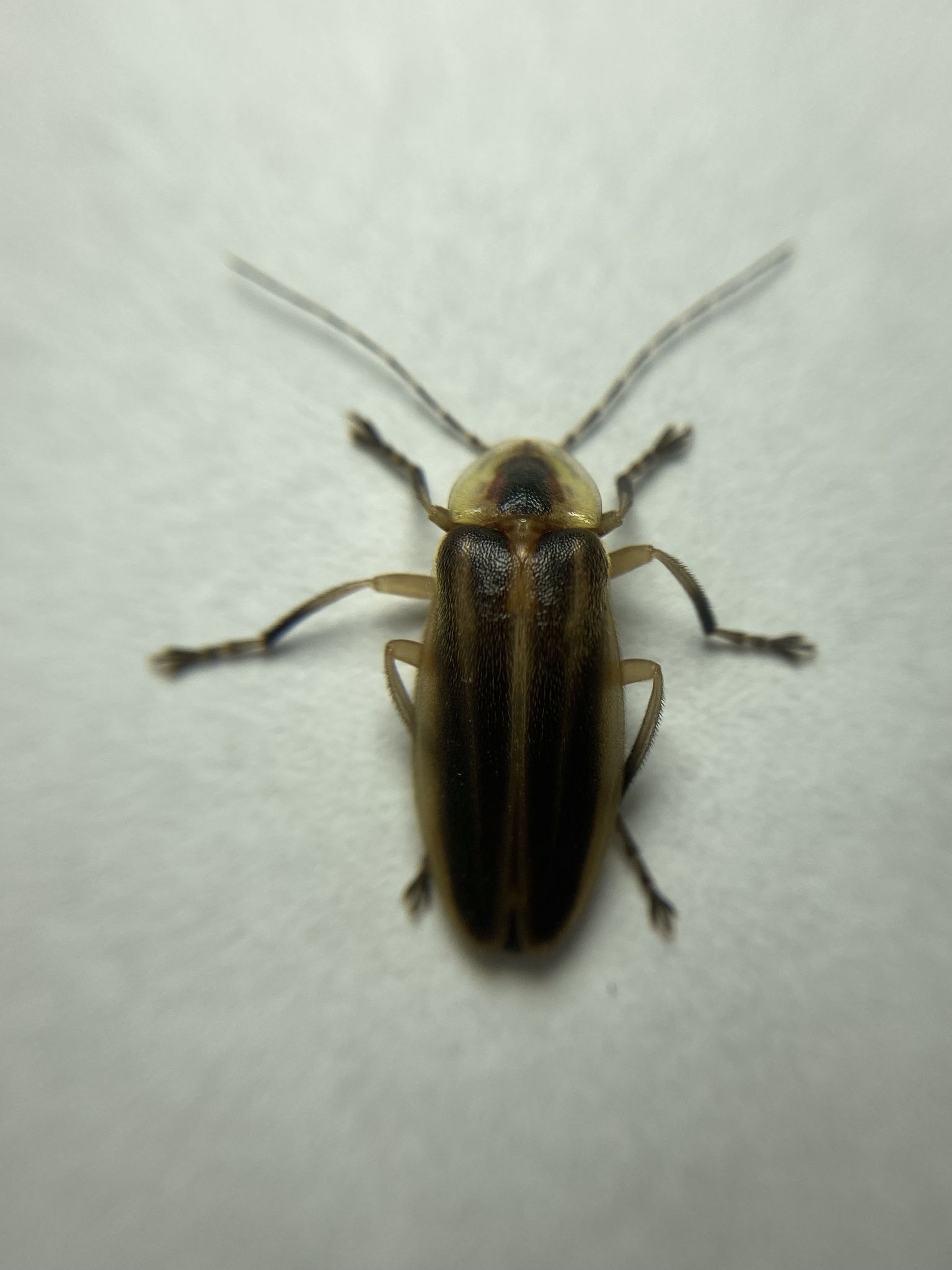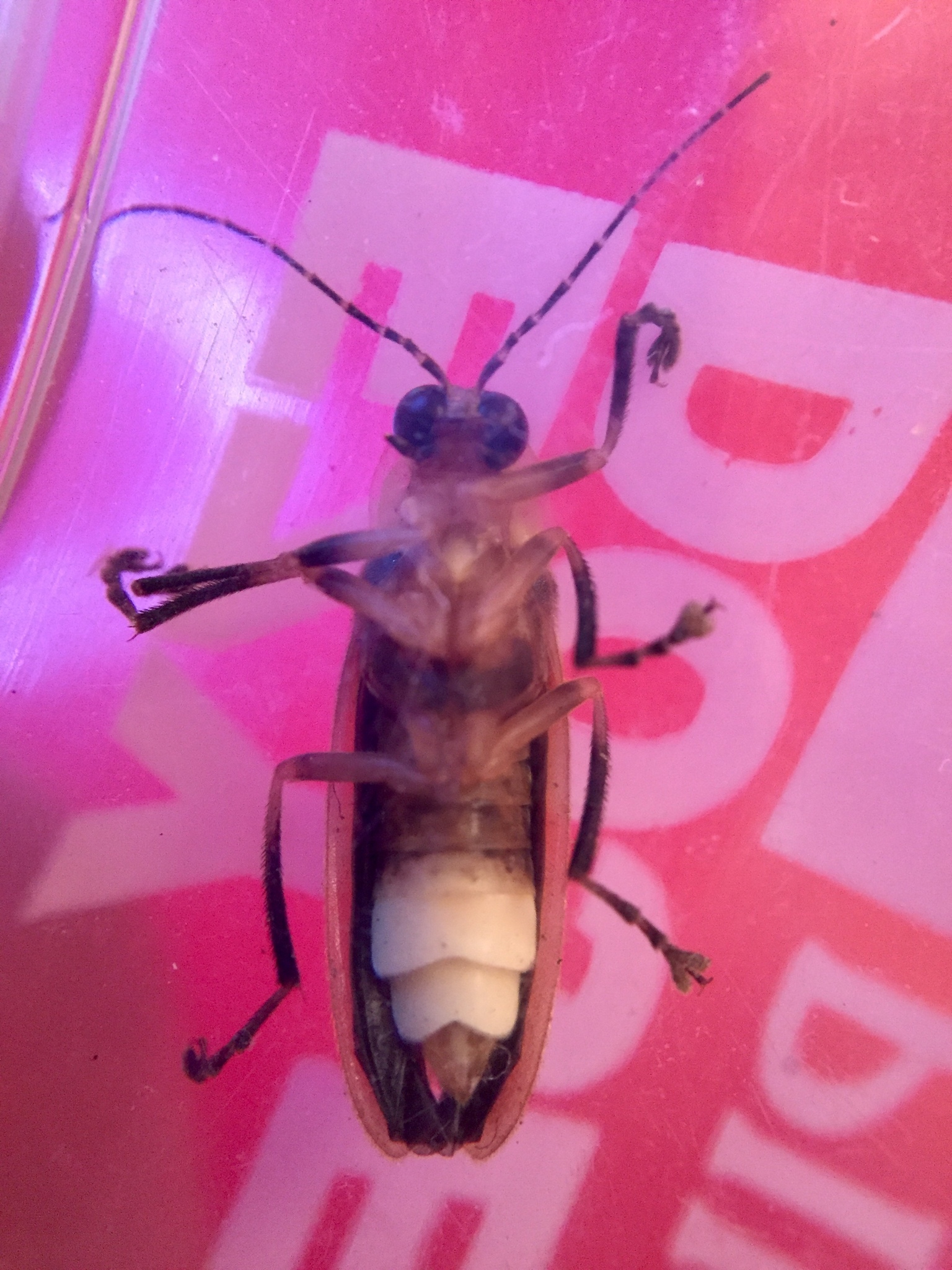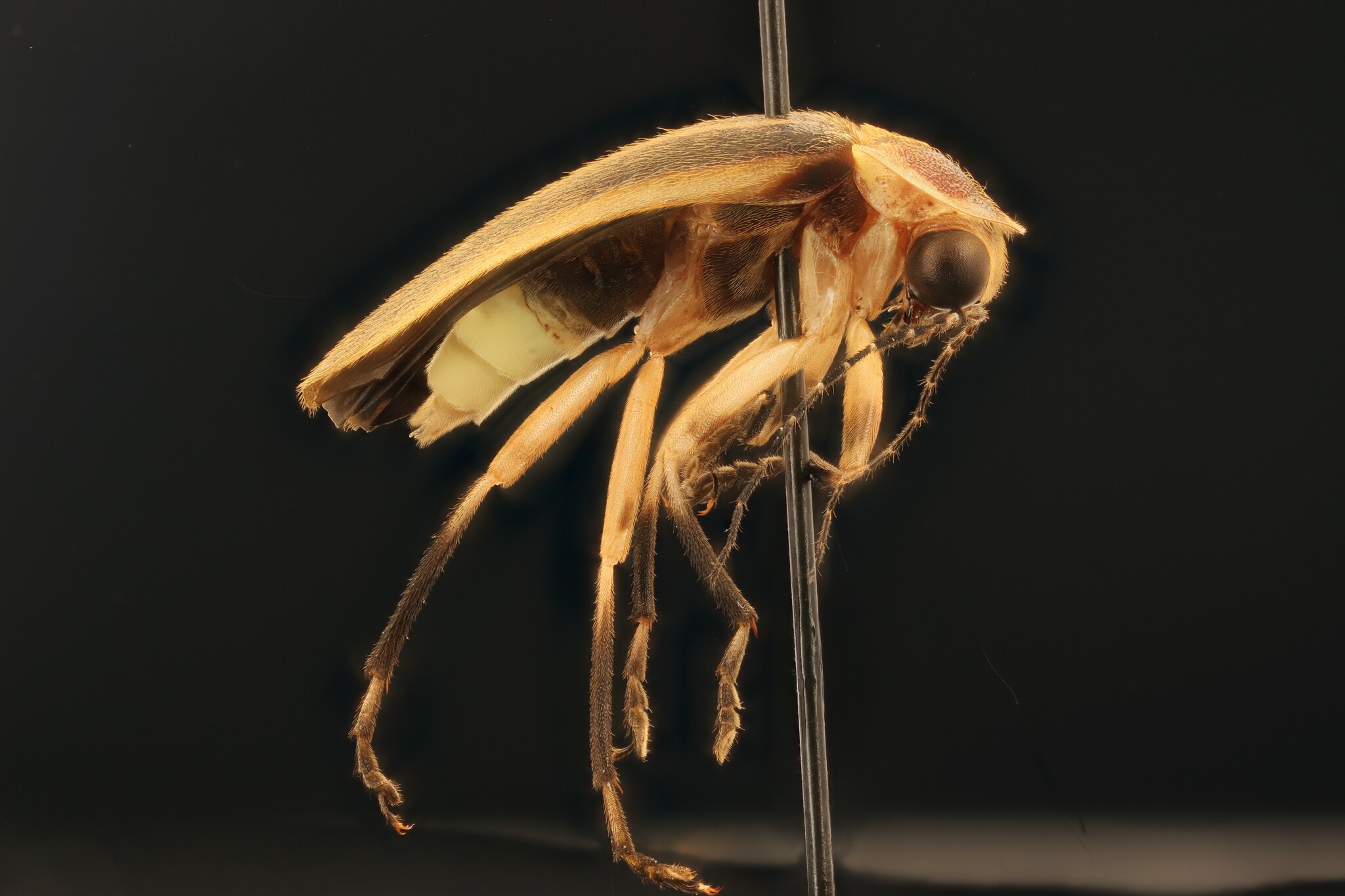Map Snapshot







7 Records
Seasonality Snapshot
Source: Wikipedia
| Photuris lucicrescens | |
|---|---|

| |
| Scientific classification | |
| Domain: | Eukaryota |
| Kingdom: | Animalia |
| Phylum: | Arthropoda |
| Class: | Insecta |
| Order: | Coleoptera |
| Family: | Lampyridae |
| Genus: | Photuris |
| Species: | P. lucicrescens
|
| Binomial name | |
| Photuris lucicrescens Barber, 1951
| |
Photuris lucicrescens, the long crescendo Photuris,[2] July comet, big scary,[3] or big Lucy,[4] is a species of beetle in the Lampyridae family.[5][6] It is found in the eastern United States.[1]
Description
[edit]P. lucicrescens is a large firefly, with adults measuring 15–20 mm (0.6–0.8 in) long. They appear to be hunchbacked when viewed from the side. They have brown wing covers, or elytra, with wide light-colored side margins and stripes in the center of each side, starting from the shoulder and extending almost the entire length of the body. The head shield, or pronotum, is yellow, with a dark arrow in the center, which is often interrupted, appearing as two separate marks. The dark central mark is bounded by red or orange. Photuris fireflies have longer legs than species in the other common firefly genus in the United States, Photinus. The legs are pale close to the body. Lanterns are visible on the abdomen as pale segments.[3][4]
Etymology
[edit]Photuris has its origins in the Greek words for light, "phot",[7] and tail, or "ouros".[8] The specific epithet combines the prefix luci- from the Latin word for light[9] with the Latin root for crescendo,[10] describing this species' flash, which grows in intensity.
Life Cycle
[edit]Beetles such as P. lucicrescens go through four life stages: egg, larva, pupa, and adult. Photuris fireflies spend the majority of their lives as larvae, which are bioluminescent. Larvae are predaceous, eating snails, worms, and other soft-bodied invertebrates. Adults appear in mid-summer, from June to August.[3]
Behavior
[edit]Adult male P. lucicrescens fireflies fly over vegetation about 45 minutes after sunset and later, flashing to attract the attention of females. Their flash pattern is very distinctive, with a long, greenish flash that lasts as long as 2 seconds, increasing in intensity before ending abruptly. The firefly is dark for 3 to 5 seconds before it flashes again. Males also have a flash pattern that consists of a single, shorter flash, which is easily confused with flashes of other Photuris species. A female responds with an answering flash from low vegetation. Females also use "aggressive mimicry" to lure other species of fireflies in order to eat them. Because of this behavior, P. lucicrescens are one of the species known as "femme fatales".[3][4]
Habitat
[edit]This firefly can be seen in open fields and forests.[3]
Range
[edit]P. lucicrescens is found throughout the eastern United States, as far west as Kansas and Oklahoma.[1]
References
[edit]- ^ a b c Fallon, C. (2021). "Photinus lucicrescens". IUCN Red List of Threatened Species. 2021: e.T164045854A166771518. doi:10.2305/IUCN.UK.2021-1.RLTS.T164045854A166771518.en.
- ^ Buschman, Larry. "Field Guide to Western North American Fireflies, Draft 2016" (PDF).
- ^ a b c d e Faust, Lynn Frierson (2017). Fireflies, Glow-worms, and Lightning Bugs. University of Georgia Press. ISBN 978-0-8203-4872-8.
- ^ a b c Lloyd, J.E. (2018). A naturalist's long walk among shadows: of North American Photuris - patterns, outlines, silhouettes… echoes (PDF). Gainesville, FL: Self-published. Retrieved 31 July 2024.
- ^ "NatureServe Explorer 2.0". explorer.natureserve.org. Retrieved 16 April 2024.
- ^ "Lampyridae - Nomen.at - animals and plants". nomen.at. Retrieved 16 April 2024.
- ^ "Definition of PHOT-". www.merriam-webster.com.
- ^ "Definition of -UROUS". www.merriam-webster.com.
- ^ "Definition of LUCI-". www.merriam-webster.com.
- ^ "cresco". Wiktionary, the free dictionary. 21 June 2024.










